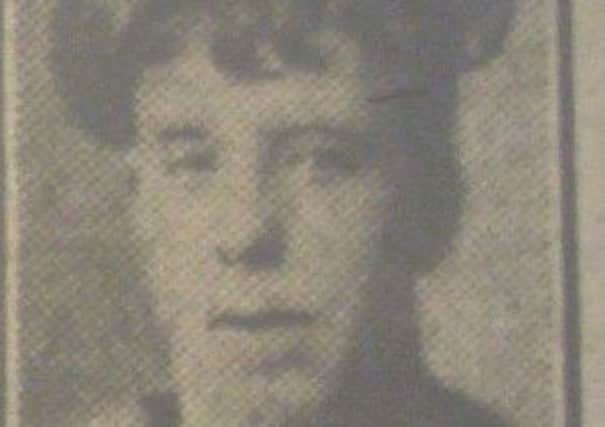Carrick man perished on ‘Livebait Squadron’ duty


Exactly seven weeks into the conflict, three old British Royal Navy cruisers, manned mainly by reservists and referred to as the ‘Livebait Squadron’, were sunk by just one German submarine while on patrol in the North Sea, according to research by Karen O’Rawe, chair History Hub Ulster.
In all 1,459 men were lost off the Dutch coast, on the HMS Aboukir, HMS Cressy and HMS Hogue. Of these, at least 31 had connections to Ulster, most of them stokers and three quarters of them part-time reservists. Their average age was only 27. A total of 30 Ulstermen are buried at sea, with only one from the province with a known grave.
Advertisement
Hide AdAdvertisement
Hide AdAmong those to perish was Henry McMurran (27), a stoker (1st) from Carrickfergus. He was the grand uncle of former Mayor, Councillor Billy Hamilton (see below).
The vessels were part of the 7th Cruiser Squadron, which was assigned patrol duties in the North Sea. Although concerns had been expressed about the vulnerability of these old ships, no changes had been made. There was less concern about submarine attacks at this point in the war than later, despite the previous sinking of HMS Pathfinder.
The morning of September 22 1914 found a single U-boat passing through the Broad Fourteens on her way back to base. Surfacing, U-9 spotted the unprotected ships and moved to attack. She fired one torpedo from a range of 500m, which struck Aboukir, flooding the engine room and causing the ship to stop. Aboukir capsized and sank within 30 minutes. It was assumed that the ship had hit a mine, and the other two cruisers closed in to help. U-9 resurfaced to observe Hogue and Cressy trying to rescue men in the water, and fired two torpedoes at Hogue from a range of 270m. Despite the ship opening fire on U-9, the two torpedoes struck Hogue and within 15 minutes she capsized. Cressy was left to face U-9 alone but failed. Hit by two torpedoes, she capsized and floated upside down for 40 minutes before sinking.
One man writing to his mother told of his experiences; “The sea was literally alive with men struggling and grasping for anything to save themselves.”
Advertisement
Hide AdAdvertisement
Hide AdThe disaster shook British public opinion and the reputation of the Royal Navy. There were reprimands and criticisms for those in charge. Meanwhile, the U-boat as a weapon of war was established. Sceptics in Germany fell silent and the Royal Navy never underestimated its threat again. In later years, it is estimated that 15,000 men fell victim to torpedo attacks. In this first major incident alone one tenth of that number died.
The anniversary on Monday was marked at Chatham with a drumhead service and fall of 1,459 poppy petals, one for each life lost.